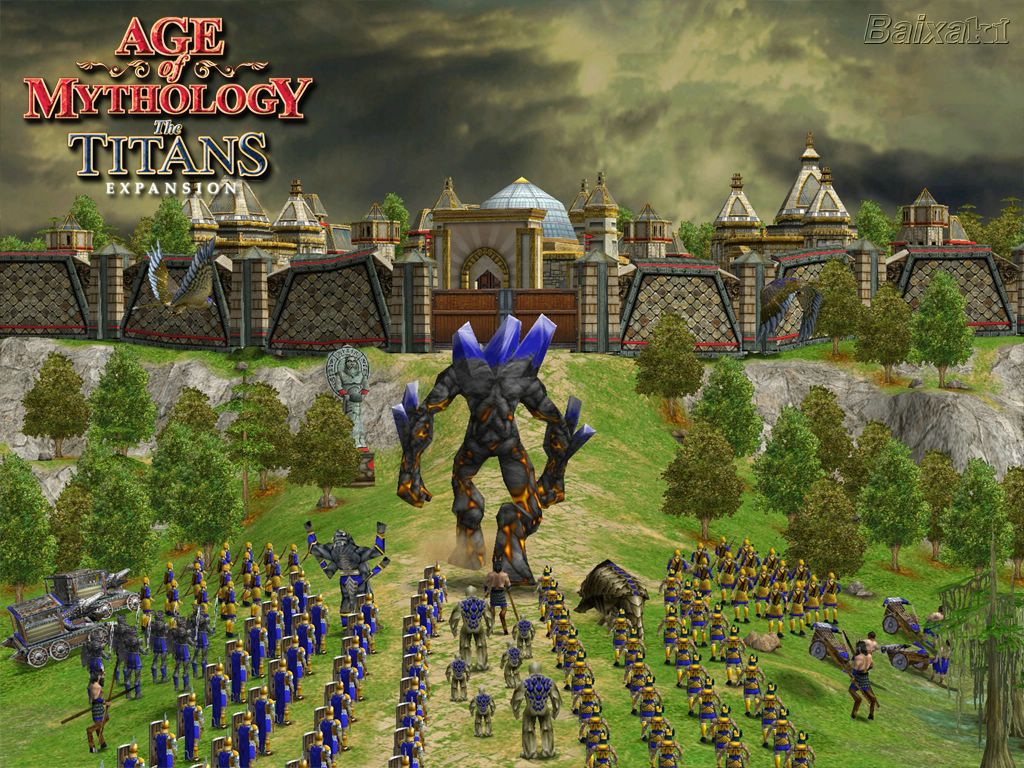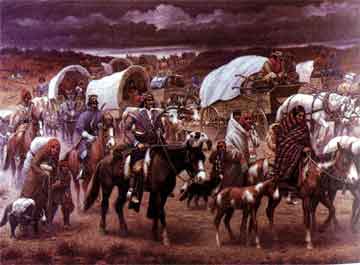|
Other articles:
|


 The Trail of Tears was the forced relocation during the 1830s of Eastern Woodlands Indians to areas west of the Mississippi River.
The Trail of Tears was the forced relocation during the 1830s of Eastern Woodlands Indians to areas west of the Mississippi River.
 The Cherokee people called this journey the "Trail of Tears," because of its devastating effects. The migrants faced hunger, disease, and exhaustion on the .
The Cherokee people called this journey the "Trail of Tears," because of its devastating effects. The migrants faced hunger, disease, and exhaustion on the .


 The Trail of Tears was the relocation and movement of Native American nations from southeastern parts of the present-day United States. .
Welcome to the official Trail of Tears website! . Welcome to the official site of Trail of Tears, your new favourite provider of darkness and disturbia! .
The Trail of Tears was the relocation and movement of Native American nations from southeastern parts of the present-day United States. .
Welcome to the official Trail of Tears website! . Welcome to the official site of Trail of Tears, your new favourite provider of darkness and disturbia! .
 Watch videos & listen free to Trail of Tears: Liquid View, The Feverish Alliance & more, plus 47 pictures. Trail of Tears is a Symphonic Gothic Metal/Black .
Watch videos & listen free to Trail of Tears: Liquid View, The Feverish Alliance & more, plus 47 pictures. Trail of Tears is a Symphonic Gothic Metal/Black .
 Movement of Cherokee from Georgia to Oklahoma. Backed by the federal government and President Andrew Jackson's desire, American troops forced hundreds of .
Movement of Cherokee from Georgia to Oklahoma. Backed by the federal government and President Andrew Jackson's desire, American troops forced hundreds of .
 Overview of the Trail of Tears from the Cherokee of California.
Apr 19, 2011 . Charles O. Walker's Cherokee Images has been reprinted by the Georgia Chapter of the Trail of Tears Association. .
May 25, 2011 . Find out how you can detect the Trail of Tears National Historic Trail by following road signs designed to help travelers. .
The common phrase Trail of Tears refers to the forced relocation of the Cherokee Native American tribe to the Western United States in 1838-39, .
In 1838 the Cherokee were stripped of their rights and forced to move against their will on 'The Trail of Tears' by the governments of Georgia and United .
This web site is about the Trail of Tears Commemorative Motorcycle Ride® that begins in Bridgeport, AL and ends in Waterloo, AL. Here you'll learn about the .
The Trail of Tears and the Forced Relocation of the Cherokee Nation . The Trail of Tears National Historic Trail commemorates the removal of the Cherokee .
Overview of the Trail of Tears from the Cherokee of California.
Apr 19, 2011 . Charles O. Walker's Cherokee Images has been reprinted by the Georgia Chapter of the Trail of Tears Association. .
May 25, 2011 . Find out how you can detect the Trail of Tears National Historic Trail by following road signs designed to help travelers. .
The common phrase Trail of Tears refers to the forced relocation of the Cherokee Native American tribe to the Western United States in 1838-39, .
In 1838 the Cherokee were stripped of their rights and forced to move against their will on 'The Trail of Tears' by the governments of Georgia and United .
This web site is about the Trail of Tears Commemorative Motorcycle Ride® that begins in Bridgeport, AL and ends in Waterloo, AL. Here you'll learn about the .
The Trail of Tears and the Forced Relocation of the Cherokee Nation . The Trail of Tears National Historic Trail commemorates the removal of the Cherokee .

 The Cherokee Nation is forced to move west to Oklahoma on various routes.
The “trail of tears” quotation was picked up by the eastern press and widely quoted. It soon become a term analogous with the removal of any Indian tribe .
To understand the infamous Trail of Tears it is not enough to know about the long and cruel journey of the Native Americans to their new home west of the .
The long march to Oklahoma on the Cherokee Trail of Tears, as told by the Eastern Cherokees of today. For a cultural vacation experience, come to the museum .
The Cherokee Nation is forced to move west to Oklahoma on various routes.
The “trail of tears” quotation was picked up by the eastern press and widely quoted. It soon become a term analogous with the removal of any Indian tribe .
To understand the infamous Trail of Tears it is not enough to know about the long and cruel journey of the Native Americans to their new home west of the .
The long march to Oklahoma on the Cherokee Trail of Tears, as told by the Eastern Cherokees of today. For a cultural vacation experience, come to the museum .

 Historical accounts, paintings, and links telling the story of the great Tsalagi tragedy.
Trail of Tears Remembrance Association, Inc. on Facebook . Bill Cason has led the Trail of Tears Ride for Seventeen Years (1994 - 2010) .
Historical accounts, paintings, and links telling the story of the great Tsalagi tragedy.
Trail of Tears Remembrance Association, Inc. on Facebook . Bill Cason has led the Trail of Tears Ride for Seventeen Years (1994 - 2010) .
 File Format: Microsoft Powerpoint - Quick View
In 1838 the Cherokee Indians were forced west on a tragic journey known as The Trail of Tears.
Trail of Tears, one of Illinois' state forests, is situated in western Union County, five miles northwest of Jonesboro and 20 miles south of Murphysboro. .
Cherokee Legends and the Trail of Tears by Tom Underwood. 4.2 out of 5 stars (6) . . I do not recommend this work as an introduction to the Trail of Tears. .
File Format: Microsoft Powerpoint - Quick View
In 1838 the Cherokee Indians were forced west on a tragic journey known as The Trail of Tears.
Trail of Tears, one of Illinois' state forests, is situated in western Union County, five miles northwest of Jonesboro and 20 miles south of Murphysboro. .
Cherokee Legends and the Trail of Tears by Tom Underwood. 4.2 out of 5 stars (6) . . I do not recommend this work as an introduction to the Trail of Tears. .
 Enter You Search Words To search The TRAIL OF TEARS Web Site. Temperature Converter Enter Temperature in Fahrenheit to Get Celsius or enter Celsius to Get .
THE TRAIL OF TEARS. Removal of Cherokee Indians and others to Oklahoma. . . More than 3000 Cherokee die on Trail of Tears, 1600 in stockades and about the .
Enter You Search Words To search The TRAIL OF TEARS Web Site. Temperature Converter Enter Temperature in Fahrenheit to Get Celsius or enter Celsius to Get .
THE TRAIL OF TEARS. Removal of Cherokee Indians and others to Oklahoma. . . More than 3000 Cherokee die on Trail of Tears, 1600 in stockades and about the .
 Jul 3, 1998 . For the July 4th holiday weekend, writer Sarah Vowell and her twin sister re- trace the "Trail of Tears" — the route their Cherokee ancestors .
Welcome to the Trail of Tears District A 2010 Quality District. Boys Age 6-10, Parents & Leaders, Boys Age 11-17, Boys & Girls Age 14- 20, Be a Volunteer .
Jul 3, 1998 . For the July 4th holiday weekend, writer Sarah Vowell and her twin sister re- trace the "Trail of Tears" — the route their Cherokee ancestors .
Welcome to the Trail of Tears District A 2010 Quality District. Boys Age 6-10, Parents & Leaders, Boys Age 11-17, Boys & Girls Age 14- 20, Be a Volunteer .
 TRAIL OF TEARS 's official profile including the latest music, albums, songs, music videos and more updates.
Home | About Us | Contact Us | My Account | Shipping Policy | Return Policy | Privacy Policy | Sitemap | Cart Help. © 2011 Trail of Tears Lodge & Resort .
That is why this forced eviction was called "The Trail of Tears." . Lesson Plan with information: Sequoyah and the Trail of Tears .
One thousand six hundred Freedmen walked the Trail of Tears along with the rest of Cherokee. At the plantation of Spring Place, the Georgia Guard threw a .
Describes how a great nation was forced to move from ancestral homelands by aggressive treaties of the United States government in the early nineteenth .
Back to the Indian Voices from the Trail of Tears homepage · Terms of Use. The following family stories are taken from the Indian-Pioneer History Collection .
Accounts of the "Cherokee Trail of Tears" with reference to "Princess Otahki" . Trail of Tears and the Forced Relocation of the Cherokee Nation .
Today, archaeological sites and road traces associated with the Cherokee Trail of Tears are endangered by rapid and ongoing development in northeast Georgia .
Started as Natt, changed their name to Trail of Tears after adding Jonathan Perez, Helena Iren Michaelsen and Frank Roald Hagen in 1997. .
Park protects one of the few certified encampment sites along the Trail Of Tears , and the burial place of two Cherokee Chiefs. Information about the site .
TRAIL OF TEARS 's official profile including the latest music, albums, songs, music videos and more updates.
Home | About Us | Contact Us | My Account | Shipping Policy | Return Policy | Privacy Policy | Sitemap | Cart Help. © 2011 Trail of Tears Lodge & Resort .
That is why this forced eviction was called "The Trail of Tears." . Lesson Plan with information: Sequoyah and the Trail of Tears .
One thousand six hundred Freedmen walked the Trail of Tears along with the rest of Cherokee. At the plantation of Spring Place, the Georgia Guard threw a .
Describes how a great nation was forced to move from ancestral homelands by aggressive treaties of the United States government in the early nineteenth .
Back to the Indian Voices from the Trail of Tears homepage · Terms of Use. The following family stories are taken from the Indian-Pioneer History Collection .
Accounts of the "Cherokee Trail of Tears" with reference to "Princess Otahki" . Trail of Tears and the Forced Relocation of the Cherokee Nation .
Today, archaeological sites and road traces associated with the Cherokee Trail of Tears are endangered by rapid and ongoing development in northeast Georgia .
Started as Natt, changed their name to Trail of Tears after adding Jonathan Perez, Helena Iren Michaelsen and Frank Roald Hagen in 1997. .
Park protects one of the few certified encampment sites along the Trail Of Tears , and the burial place of two Cherokee Chiefs. Information about the site .

 For Teachers. Trail of Tears - Story · Trail of Tears - Story · Native American Removal and Trail of Tears · The forced move to reservations (lessons) .
For Teachers. Trail of Tears - Story · Trail of Tears - Story · Native American Removal and Trail of Tears · The forced move to reservations (lessons) .
 In 1825 the U.S. government formally adopted a removal policy, which was carried out From Trail of Tears National Historic Trail by Elliott West. .
In 1825 the U.S. government formally adopted a removal policy, which was carried out From Trail of Tears National Historic Trail by Elliott West. .
 The Museum of the Cherokee Indian is an official interpretive site for the National Park Service "Trail of Tears National Historic Trail," authorized by .
The Trail of Tears Association is a non-profit organization that promotes awareness of the forced removal of the Cherokees, Choctaw, Seminole, Chickasaw, .
Pre-Removal: Cherokee life before the Trail of Tears. Court Battles: Events and legal issues leading up to forced removal .
Trail of Tears DVD movie video about President Andrew Jackson's Indian Removal Act of 1830 and the forced removal of the Cherokee Nation to Oklahoma in .
The Museum of the Cherokee Indian is an official interpretive site for the National Park Service "Trail of Tears National Historic Trail," authorized by .
The Trail of Tears Association is a non-profit organization that promotes awareness of the forced removal of the Cherokees, Choctaw, Seminole, Chickasaw, .
Pre-Removal: Cherokee life before the Trail of Tears. Court Battles: Events and legal issues leading up to forced removal .
Trail of Tears DVD movie video about President Andrew Jackson's Indian Removal Act of 1830 and the forced removal of the Cherokee Nation to Oklahoma in .
 Trail of Tears . our culture from its beginnings in North Carolina and Georgia to the time of the Trail of Tears and the Golden Age in Indian Territory. .
Trail of Tears . our culture from its beginnings in North Carolina and Georgia to the time of the Trail of Tears and the Golden Age in Indian Territory. .
 Easier - The "Trail of Tears" was a forced removal of at least twenty thousand Cherokee Indians. The exact number of Cherokees is not known. .
Easier - The "Trail of Tears" was a forced removal of at least twenty thousand Cherokee Indians. The exact number of Cherokees is not known. .
.bmp)
 Sitemap
Sitemap
|
























.bmp)

























.bmp)
